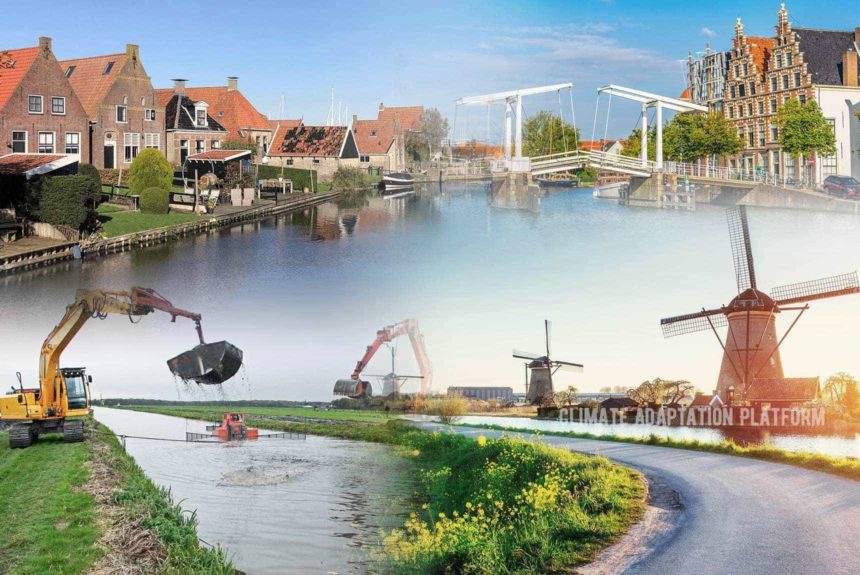Climate-related disasters from floods, droughts, and intense rainfall have increased in frequency in the last two decades. A large part of disaster risk is directly or indirectly linked to water.
Annual losses from disasters are also growing every year and are projected to reach US$414 billion by 2030 (Words into Action, 2018). It can undermine economic growth, poverty reduction, and peace, particularly in Africa, where extreme droughts are linked to conflicts and violence.
The impact of climate change on water and its cascading effects on human health and the economy makes a strong case for robust water management and transboundary cooperation, especially in regions where several countries share the same water sources and where the water practices of one country impact the other.
Because many water bodies lie between boundaries, countries also share the same risks and challenges to water, so water management solutions should be coordinated.
A podcast from the UNDRR featuring Mami Mizutori, Special Representative of the United Nations Secretary-General for Disaster Risk Reduction and head of the UN Office for Disaster Risk Reduction (UNDRR) and Henk Ovink, the Netherlands’ Special Envoy for International Water Affairs and Sherpa to the High-Level Panel for the UN 2023 Water Conference share their expertise on the importance of water management to reduce the risk of water-related disasters.
Mizutori and Ovink discussed water and disaster risk reduction, the importance of prevention versus response, and investing in resilience.
“We need to stop trying to manage disasters after they strike us”, Mizutori says.
“It means that taking care of our groundwater is also taking care of our neighbours and working together, according to Ovink.
Having both come from disaster-prone areas, Mizutori from Japan and Ovink from the Netherlands know the significance of disaster mitigation and prevention and build resilience and adapt to it.
The Netherlands is built on a delta, and like many vulnerable low-lying countries with many rivers, canals, and lakes, there are susceptible to flooding.
Ovink says that living in a delta presents a myriad of challenges – the amount of water coming from the oceans, from the rivers by ice melts and rain; he says that everything that goes into the river upstream ends up in the delta, but these challenges of constantly living with water also offer opportunities.
He adds that in the Netherlands, they try to look at the future and not build back or repair what was lost.
They don’t apply a band-aid approach to failing infrastructure but build resiliency layer by layer in the systems of water management, environmental protection, and building of our cities. This layer-by-layer resilience-building approach is now paying off, Ovink says.
Mizutori says that the Netherlands exemplifies building resilience for hundreds of years. Reflecting on what Ovink shared about how the Netherlands addressed their water-based risks, she says that the countries which are most disaster-prone and most vulnerable because of where they are located turn out to be the most resilient country.
She shared Japan’s vulnerability to earthquakes and tsunamis, citing the Great Kanto earthquake that devastated her country in 1923 and how since then, her people had conducted a national earthquake drill every year on the same day the tragedy happened so that the Japanese people won’t forget and will always remember that earthquakes will continue to come.
To listen to the entire UNDRR podcast, click the link below:
In 2018, the UN Disaster Risk Reduction (DRR) published the Words into Action guide to strengthening the capacity of member states to implement the Sendai Framework and the Water Convention – a unique global legal and intergovernmental framework for climate change adaptation, including flood and drought management in transboundary basins. The guide offers a roadmap with concrete examples to help address water-related disasters.
Please follow the links provided in the “Source” below to read more.
Source:
Words into Action Guidelines, Implementation Guide for Addressing Water-Related Disasters and Transboundary Cooperation, Integrating Disaster Risk Management with Water Management in Climate Change Adaptation. (2018). United Nations. Retrieved from https://unece.org/sites/default/files/2021-07/ECE_MP.WAT_56_E_web_FINAL.pdf
Water Management Key to Climate Adaptation. (23 March 2022). SoundCloud. Retrieved from https://soundcloud.com/user-713610473/water-management-key-to-climate-adaptation?



Leave a Reply